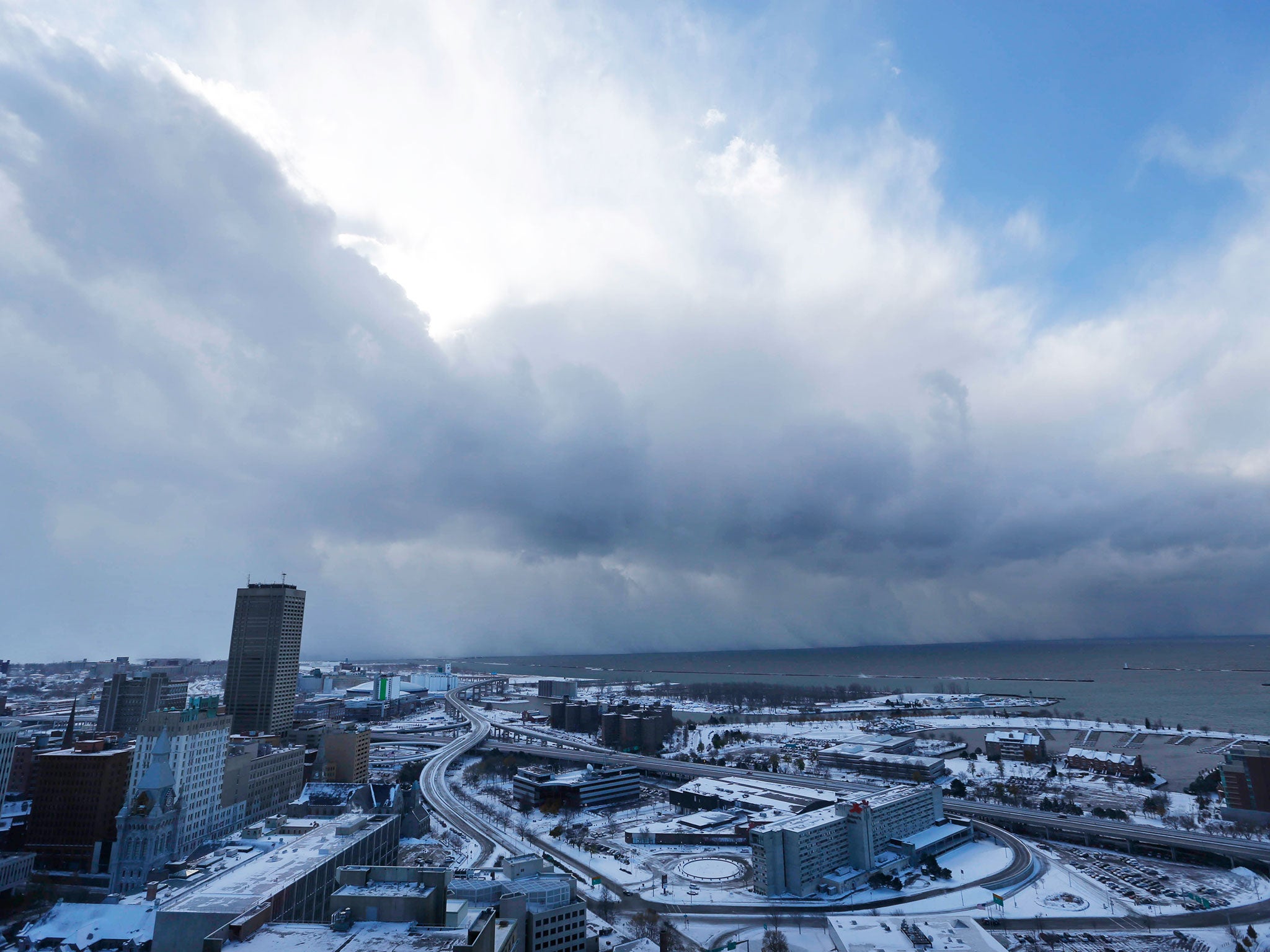New York snowstorm: What is 'lake-effect' snow and how does it form?
Lake-effect snow is said to be the cause of the blizzard in Buffalo

Lake-effect snow is said to be the cause of an extreme cold snap and rapid snowstorm that completely covered most parts of northwestern US states from yesterday morning.
Bands of snow will relentlessly fall over the state of New York and neighbouring areas for at least the next day after the region saw nearly the most heavy blizzard in the space of 24 hours.
Lake-effect snow has been formed by cold air from the arctic sweeping over the Great Lakes - on the borders of the US and Canada - and picking up water vapour particles that are relatively warm in comparison.
The bands of freezing air then cool down the droplets until they are transformed into solid snowflakes, and this process can continue for as long as the two contrasting temperatures merge together.
The potential longevity of the snow can mean that New York, New Hampshire, Michigan, North Dakota, Minnesota, Massachusetts, Wisconsin, Ohio and Pennsylvania are likely to be covered in even more intense flurries before the rest of it gets a chance to be cleared or melt away.
A very mild, warm and wet autumn coupled with arctic air hitting the Great Lakes is not unusual and only a small proportion of the US is affected by the lake-effect snow, the MetOffice in the UK confirmed.
Torrential snow can cause serious problems in areas that are not prepared for the sudden blizzards, especially in areas where transport is considered essential for getting about.
Today, the body of a 46-year-old man was found in a car in Buffalo and four people were confirmed to have also died yesterday.
One was killed in a traffic accident and the three others died after suffering heart problems, two of whom were believed to have been shoveling heavy snow at the time.
At least another two people are believed to have died in car accidents caused by icy conditions and decreased visibility on the roads in New Hampshire and Michigan over the past week.
Join our commenting forum
Join thought-provoking conversations, follow other Independent readers and see their replies
1Comments